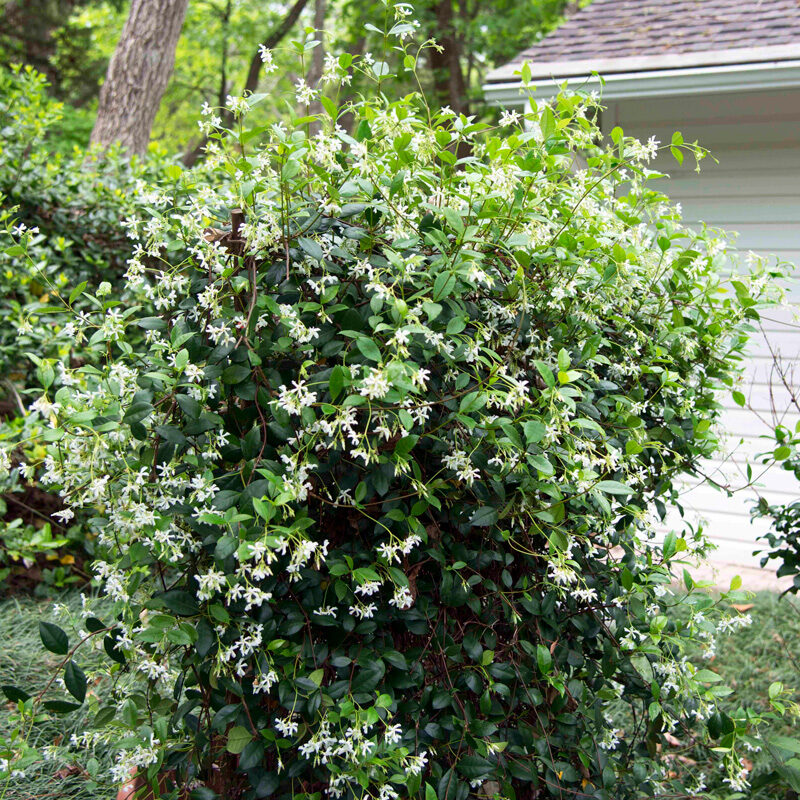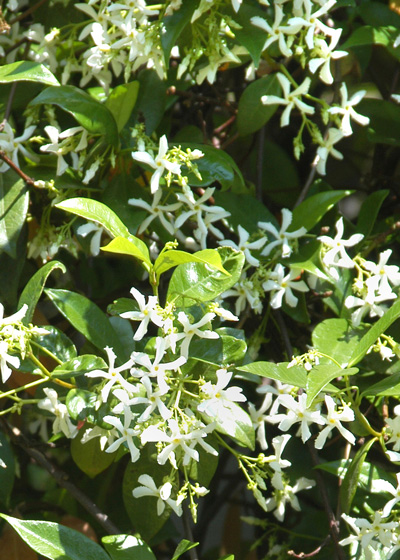Plant of the Week: Star Jasmine

Star jasmine is basically a vine – much more so than its low-growing sister, Asian jasmine, our state’s most popular full-sun groundcover. But our initial use of star jasmine in South Texas and up into College Station was as much as a tall groundcover. Grounds Maintenance had used thousands of them in big beds on the A&M campus. When they were in bloom in the spring, I’d travel far out of my way walking home from high school to wander through them.
We had a white trellis in our backyard just east of the campus, and that’s where I planted my star jasmine. It did well there, blooming each spring and loving its mild winters.
But then I transferred from A&M into the cold country of Ohio State to finish two degrees, marry and teach for a couple of years. When I came back to Texas, we settled in North Texas, and I wasn’t able to grow my star jasmine outdoors.

The result: for 30 years I have had this same plant growing in a very large pot. It comes out of my greenhouse just before bloom time each spring, and it fills the air of our courtyard for several weeks with its blessedly sweet smells, then it adorns it with its deep green foliage and occasional blooms the rest of the season until winter forces it to retreat to the greenhouse again.
And my plant and I are quite content with that arrangement. It’s in line for a repot and fresh soil this spring, but probably right back into the same old container.
A few basic facts…
• Star jasmine (Trachelospermum jasminoides). Sister to the most popular full-sun groundcover in Texas over the past 50 years, Asian jasmine, T. asiaticum.
• Slightly larger leaves than Asian jasmine and more open growth habit.
• Winter-hardy to Zone 8 (1990 Hardiness Zone Map). Great in South Texas. You’ll see it north of Tyler/Waco/Hill Country line, but it has frozen almost every time I’ve tried it in rural Collin County (DFW area).
• Variety ‘Madison’ is reported to be slightly more winter-hardy, but not enough for me in our landscape.
• Blooms heavily in late March in South Texas and through mid- or late April farther north.
• Extremely fragrant white blooms.
• Good in sun or part shade.

• Evergreen, twining vine growing to 15 to 18 feet tall.
• Does best given a trellis or fence for support.
• Propagated by cuttings, but it’s easiest to get new plants as 1-gallon pots in nursery in spring.
